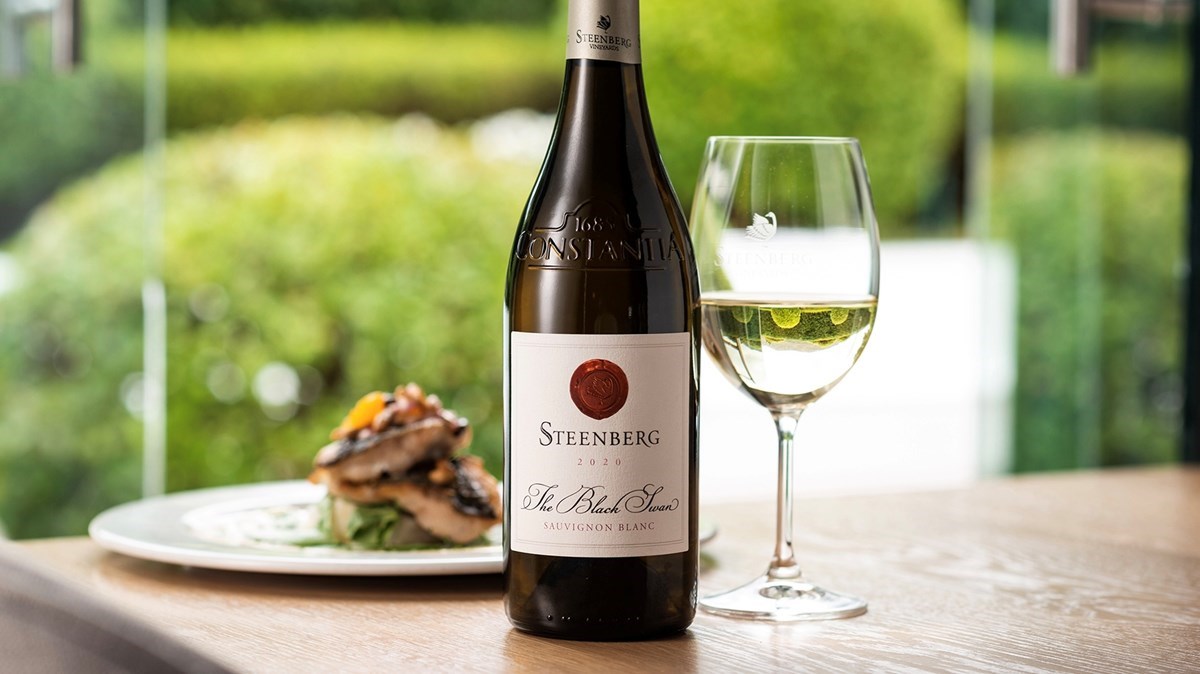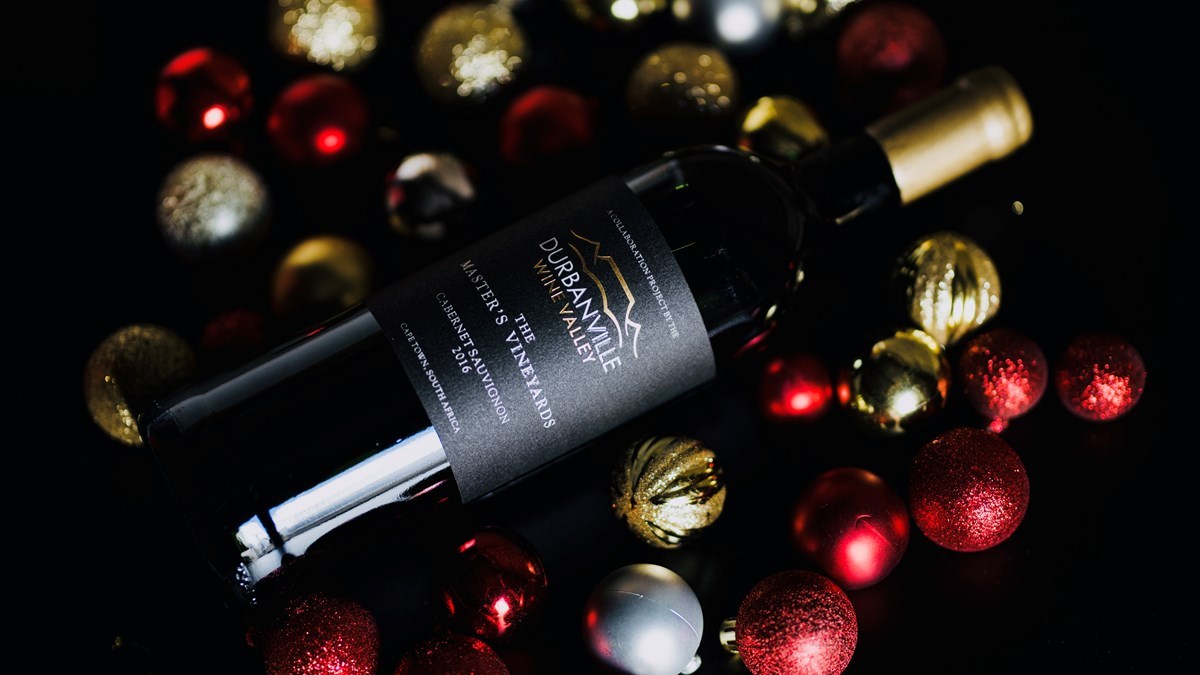The number of real-time events on the annual wine tasting circuit seemed to again shrink further in 2021 under the inexorable impact of the pandemic – and on-off lockdown bans. At the same time, the number of virtual zoom tastings grew exponentially, becoming de rigueur for bigger wine shows and competitions. Going back to basics, wine producers with reduced promotional budgets seemed to spend even less on pr and media events – and more on the core business of maintaining markets.
Planning ahead in these uncertain times requires resilience and flexibility. Often, I attended wine tastings at cellars on the second or third try after earlier diary dates were cancelled at short notice due to spikes in the pandemic. Despite lockdown restrictions, the South African wine industry managed to celebrate some significant milestones – the fiftieth anniversary of the Stellenbosch wine route (the first Wineland tourism initiative in South Africa), the fiftieth anniversary of Cap Classique at Simonsig, the thirtieth anniversary of the Cap Classique Producers Association and more besides.
Tokara recently announced on Facebook it is now a fully vaccinated cellar in terms of staff – a highly commendable initiative. As the conversation worldwide inevitably turns to the need for a mandatory vaccine to counter Covid, the beleaguered wine industry could play a proactive role in promoting South Africa as a safe and secure tourist destination. Franschhoek, one of the major tourist destinations in the Winelands, set the bar when it announced it was 85% vaccinated by late 2021. Wine producers could meet the challenge by adopting fully vaccinated as the gold standard for cellars, restaurants, facilities and wine routes – in terms of staff and visitors. No jab, no job, no entry.
Top 10 tastings of 2021
One of the highlights of my tasting calendar was the twenty-fifth-anniversary celebration of Kleine Zalze. Luminaries of the South African wine industry turned out to celebrate the evolution of one of South Africa’s major modern wine brands. Over a tasting of older vintages of family reserve wines from Chenin and Sauvignon Blanc to Cabernet Sauvignon and Shiraz, foreign buyers, winemakers and key figures paid tribute to the hard work of Kobus Basson and his team in building a global wine brand in the short space of twenty-five years – an unparalleled achievement in South Africa.

Proprietor Kobus Basson paid tribute to the pillars of Kleine Zalze – the farm (the terroir), the family, the relationships, the lifestyle, the team and the strategic focus of the brand in price-points, varieties and markets. Johan Krige of Kanonkop paid tribute to the owner’s great passion for food and wine, driving a brand which won international recognition. Neil Ellis lauded the stylistic expression of the farm’s terroir in varieties like Cabernet Sauvignon – wines which avoid over-oaking. Bennie Howard acclaimed the elegance, depth and intensity of the maiden Kleine Zalze Shiraz which won the annual Shiraz Challenge. Ken Forrester of Ken Forrester Wines congratulated them on promoting brand Chenin Blanc at home and abroad as a signature variety through its bushvine and reserve series. The rollcall went on and on.
And chef Nic van Wyk of Terroir Restaurant prepared the best table of the year, a gourmet feast served to fifty guests on the open terrace, a table creaking with fabulous fare to match the wines of Kleine Zalze.
“Twenty years of excellence”, a rare tasting of Ken Forrester’s flagship FMC (Forrester Meinert Chenin) was another highlight on the tasting circuit in 2021. A crusader for Chenin Blanc, the mercurial Ken Forrester celebrated twenty years of FMC (some quip it stands for flipping magical Chenin!), with a tasting of some of the best vintages from 2006 to 2019. In his Stellenbosch cellar, he declares, “I wanted to make the best white wine in the world, using Chenin Blanc. FMC is a clear expression of vintage. Each vintage is unique. Botrytis is the essence of FMC Chenin, the seam. We use what nature gives us. I’ve yet to define the evolution of FMC. Its longevity is outstanding.”
The grapes are primarily sourced from a single parcel of vines which produce exceptional fruit of great concentration and very low yields in two old bushvine vineyards planted in 1970 and 1974. Barrel-fermented in large French oak barrels and aged for up to fourteen months in new and second-fill oak, FMC has won many awards. Ken recalls, “When I bought the farm over three decades ago, I was told to plant Sauvignon Blanc and Pinotage, what the market wanted. We kept it as it was. Winemaker colleagues were bemused when we barrel-fermented the old vine Chenin in the 1990s! The matching fare – chilled courgette soup, Nobu-style sashimi and Dalewood brie, was superb.
Marking another milestone, a tasting of thirty years of Cap Classique at Graham Beck in Robertson made by Pieter “Bubbles” Ferreira was one of the highlights of thirty years of wine tasting for me (see my recent column Dizzy fizzy flights). In a master class in MCC, Pieter treated media to a rare tasting of Graham Beck’s maiden Blanc de Blancs, disgorged in front of us after spending three decades in the cellar on its lees. We were also privileged to taste a limited edition MCC in his new artisanal collection, an extended lees ageing Brut 2009 blend of Chardonnay and Pinot Noir disgorged after 134 months on the lees. In two of the most innovative flights I’ve experienced, Pieter demonstrated the evolution of a Chardonnay base wine which underwent fermentation in different clay, porcelain, cement and oak vessels, under cork and screw-cap.

The refocus on Sauvignon Blanc as the hero variety of the Constantia Wine Valley heralded at least three of my top ten wine tastings of 2021. At Steenberg, cellar mistress Elunda Basson led a tasting of the cellar’s reserve Black Swan Sauvignon Blanc over the last decade. On an estate planted to 60% Sauvignon Blanc, with 23 blocks dedicated to the variety, Elunda makes five different styles of single varietal and blended Sauvignon Blanc, including the signature Black Swan, part-wooded Rattlesnake and estate version. She says, “Sauvignon Blanc has changed so much as a category. In recent years consumers and producers have moved from herbaceous styles to the more tropical side of SB.”
The tasting demonstrated her theory that Sauvignon Blanc favours the uneven years – and that it is a sensitive variety that favours cooler vintages and classic, non-interventionist winemaking techniques. She adds that the evolution of the variety in the vineyard helps to express the site, while in the bottle it depends on the closure for longevity – and favours the screw-caps which they use across their three styles. Elunda concludes that the golden thread of Sauvignon Blanc at Steenberg and in the Constantia Wine Valley – which is overwhelmingly planted to 188 hectares of the variety (10% of the national vineyard) – is terroir, diversity, minerality, scintillating acidity and texture. Chef Kerry Kilpin of Tryn and Bistro1682 created yet another gastronomic food and wine pairing to match.

Over a vertical flight marking ten years of making Constantia Glen Two from 2011-2019 at Constantia Glen, winemaker Justin van Wyk demonstrated that a blend of Sauvignon Blanc and Semillon is “the essence of Constantia”. He believes the signature white blend is “the best wine we can make in Constantia” – and proved its longevity and long journey to maturation over a tasting of every vintage since 2011. He believes the blend has more ageability than a straight Sauvignon Blanc – and that it pays tribute to Semillon, a heritage variety planted in the Constantia Valley long before Sauvignon Blanc. He focuses on making an old-world, Sancerre-style wine with texture, tension, acidity and salinity.
A tasting of archival vintages at Groot Constantia at the opening of the new vintage vault of the Cape’s first cellar (founded 1685) was another highlight on my wine tasting circuit in 2021. Celebrating two decades at this historic cellar, winemaker Boela Gerber demonstrated the same sense of longevity in wines he has made here since 2001 – comparing an old and new vintage of the estate’s signature varieties, from Sauvignon Blanc, Merlot and Shiraz to the flagship Gouverneurs Reserve Red and Grand Constance, a natural sweet wine which reimagines the Cape’s famous dessert wine. The collection of old Constantia wine bottles on display goes back to 1791. A memorable dinner served at a long table in the underground vintage vault set the scene. Talk about social distancing. Observing protocols I needed opera glasses to see Boela at the head of the table.
Other highlights of 2021 I’ve reported on in recent columns for wine.co.za include the tasting of the long-awaited maiden flagship Taaibosch Crescendo 2018, a high-altitude Cabernet Franc led blend made by Schalk Willem Joubert on the made-over Cordoba farm in the Helderberg. Another event was a tasting of a dozen terroir wines in the fabulous old vine series of Anthonij Rupert cellar in the Franschhoek Wine Valley. I tasted the finest Chenin Blanc, Semillon, Chardonnay and Pinot Noir sourced from treasured single vineyards located in remote pockets of the Cape countryside by the Old Vines Project - old bush vines kept alive and sustainable in a vital conservation initiative.

Last but not least, the launch of the Durbanville Master’s Vineyard Cabernet Sauvignon 2016, a joint initiative by the Durbanville Wine Valley was the last tasting of 2021 – and made my top ten of the year. The project, to reimagine the great George Spies Cabernet Sauvignon 1966, named after one of our great viticulturists, rated by critics as one of the great red wines of South Africa, is remaking history. Sourced from the same highly-prized vineyard on Morgenster farm (Durbanville), this limited edition (1200 bottles) was unveiled at a delightful lunch served at a long table set between the vines on Klein Roosboom farm. Made jointly by Thys Louw of Diemersdal and Wilhelm Coetzee of Durbanville Hills, the wine is the last to be made from these old vines as they are since uprooted.
This is no hyperbole. Wine Spectator called the 1966 GS Cabernet Sauvignon “the one true classic wine ever produced in South Africa”. In 2015, Jancis Robinson awarded it a perfect score of 20/20.
To complete my top ten tastings, for the first time, I’ve included the best Zoom tasting I did in 2021. It was hosted by the Klein Karoo wine route, one of the smallest (2,2% of the national vineyard), most far-flung (with several hundred kilometres between wine wards) and diverse (with the biggest concentration of Portuguese port and still wine varieties). Led by Boets Nel of De Krans, one of the pioneers of Portuguese-style wines in South Africa, the tasting zoomed the magnificent terroir of mountain, semi-desert and riverland into our offices around South Africa. Eight winemakers from Barrydale (Joubert-Tradauw), Calitzdorp (Axehill, Boplaas, De Krans and Peter Bayly), Montagu, Outeniqua (Herold) and Oudtshoorn (Karusa) led a tasting of a signature wines – a case of mixed wines from Palomino, Verdelho and Riesling to Cab Franc and Syrah was delivered to participants - which express the brooding, rugged and layered landscape of the Karoo like a Pierneef painting.
Now that’s the way resilient Cape winemakers roll, breaking down the disconnect of Covid.